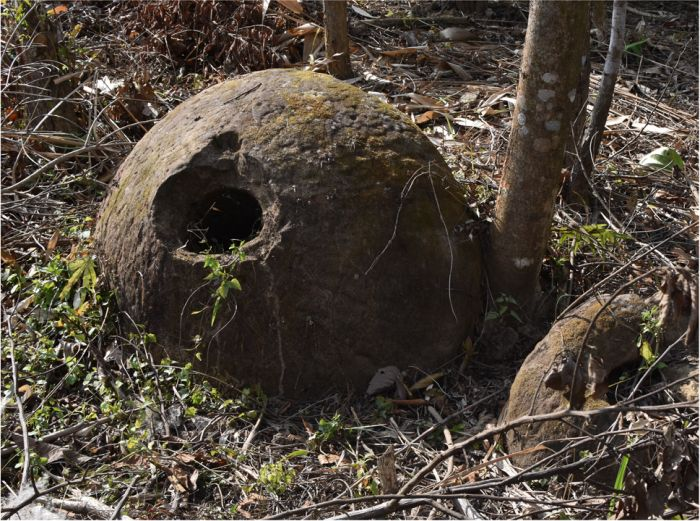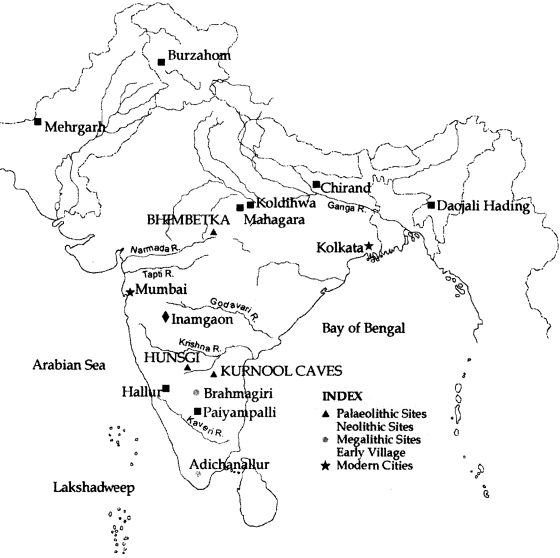Megaliths of Assam | 12 Apr 2022
Why in News?
Recently, Archaeologists have identified 65 large sandstone jars (Megaliths) believed to be used for ritual burials across four sites in Hasao district, Assam.
- Earlier in 2020, the State Department of Archaeology, Chennai had identified 250 cairn-circles (Megalithic Structures) from the Kodumanal excavation site in Erode district of Tamilnadu.
What are the Assam Megaliths? 
- Some jars are tall and cylindrical, while others are partly or fully buried in the ground.
- Some of them spanned up to three metres high and two metres wide. Some of the jars feature decorative carvings, while others are plain.
What is the History of Megaliths in Assam?
- The jars of Assam were first sighted in 1929 by British civil servants James Philip Mills and John Henry Hutton, who recorded their presence in six sites in Dima Hasao: Derebore (now Hojai Dobongling), Kobak, Kartong, Molongpa (now Melange Puram), Ndunglo and Bolasan (now Nuchubunglo).
- Two sites were discovered in 2016. In 2020, four more sites were discovered by the History and Archaeology Department at North-Eastern Hill University, Shillong, Meghalaya.
- At one site, Nuchubunglo, as many as 546 jars were found which was the largest such site in the world.
What is the significance of the Findings?
- While the jars are yet to be scientifically dated, the researchers said links could be drawn with the stone jars found in Laos and Indonesia.
- There are typological and morphological similarities between the jars found at all three sites.
- There is no reported parallel anywhere else in India, apart from the northeast – this points to the fact that once upon a time a group of people having similar kind of cultural practice occupied the same geography between Laos and Northeast India.
- Dating done at the Laos site suggests that jars were positioned at the sites as early as the late second millennium BC.
- In Laos, researchers had said there was a “strong association” between the stone jars and mortuary practices, with human skeletal remains found inside and buried around the jars.
- In Indonesia, the function of the jars remains unconfirmed, although some scholars suggest a similar mortuary role.
- It calls for more research to understand the “likely cultural relationship” between Assam and Laos and Indonesia.
What are Megaliths?
- A megalith is a large stone that has been used to construct a prehistoric structure or monument, either alone or together with other stones.
- Megaliths were constructed either as burial sites or commemorative (non-sepulchral) memorials.
- The former are sites with actual burial remains, such as dolmenoid cists (box-shaped stone burial chambers), cairn circles (stone circles with defined peripheries) and capstones (distinctive mushroom-shaped burial chambers found mainly in Kerala).
- The urn or the sarcophagus containing the mortal remains was usually made of terracotta. Non-sepulchral megaliths include memorial sites such as menhirs.
- In India, archaeologists trace the majority of the megaliths to the Iron Age (1500 BC to 500 BC), though some sites precede the Iron Age, extending up to 2000 BC.
- Megaliths are spread across the Indian subcontinent. The majority of megalithic sites are found in Peninsular India, concentrated in the states of Maharashtra (mainly in Vidarbha), Karnataka, Tamil Nadu, Kerala, Andhra Pradesh, and Telangana.
Major Megalithic Sites in India

